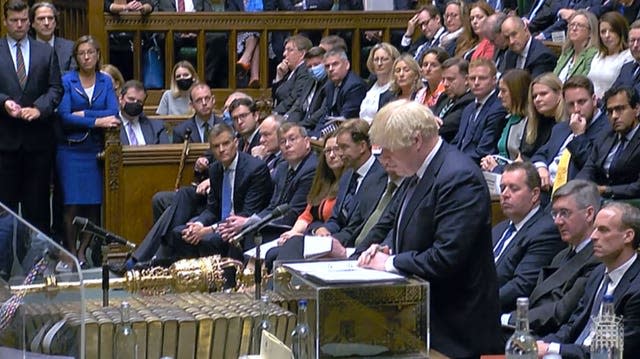MPs ‘can lead by example’ by wearing masks when seated in Parliament
Politicians wearing face coverings in Parliament when they are not speaking sets a good example, a public health expert has said.
The House of Commons was at its busiest since March 2020 as MPs were recalled to debate the situation in Afghanistan, with members sitting shoulder-to-shoulder.
Some were wearing face coverings as they sat for the hours-long session, but many, including Prime Minister Boris Johnson, were not.

Labour MP Dame Angela Eagle tweeted: “Not a single member of the Govt front bench wearing a mask from PM & Health Secretary on down #HoC Almost no other Tory either.”
Wednesday’s debate began at around 9.30am and was due to end at 5pm.
Since July 19 face coverings have not been mandatory in England, but Government guidance says they are recommended in crowded and enclosed spaces.
It says: “We expect and recommend that members of the public continue to wear face coverings in crowded and enclosed spaces where you come into contact with people you don’t normally meet.”
Not a single member of the Govt front bench wearing a mask from PM & Health Secretary on down #HoC Almost no other Tory either
— Angela Eagle DBE 💙 (@angelaeagle) August 18, 2021
It adds that people should “use your judgement in deciding where you should wear one”.
Edinburgh University professor of public health Linda Bauld acknowledged that while it might be difficult to make a speech in Parliament with a mask on, it would be “good practice” for them to be worn when not speaking.
She told the PA news agency: “The virus is airborne, we currently have slightly rising numbers of cases, so it is a protective measure that they can take and I’m sure everyone in public health would agree when indoors we should do that where possible.
“It is important that people who are in positions of authority lead by example, and that’s been a bit of an issue throughout the pandemic in a whole variety of respects but continues to be the case.
“If public figures are wearing them indoors that will encourage others to do that in working environments even if it’s advisory.
“When you’re in a crowded indoor environment and distancing, as in two metres, is not possible, then a face covering does provide additional protection.
“And I think if members of the public are seeing a crowded indoor environment, where those mitigations are not being used when they’re available, that’s not best practice and it may send a message in relation to other environments that people are accessing.”


